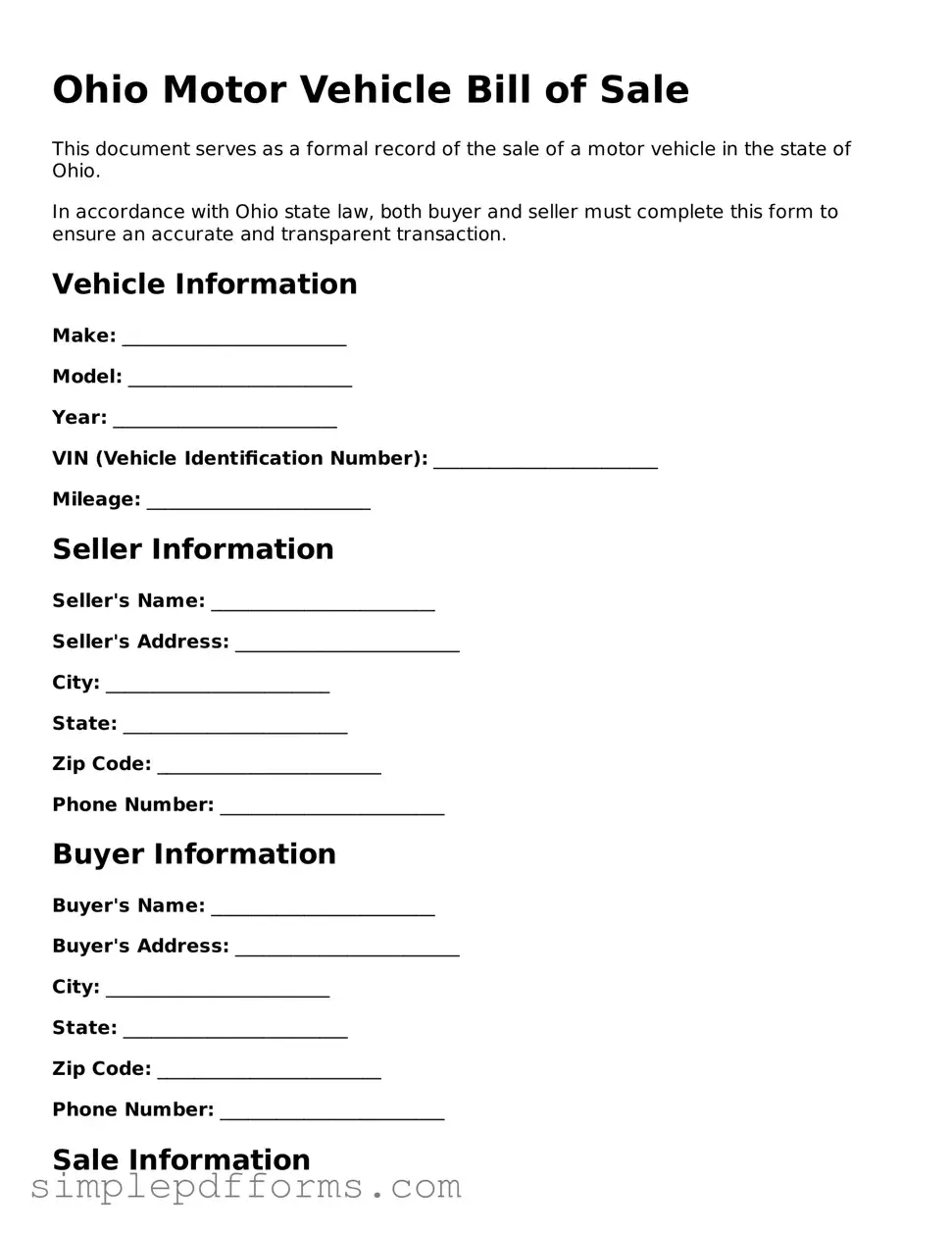Ohio Motor Vehicle Bill of Sale
This document serves as a formal record of the sale of a motor vehicle in the state of Ohio.
In accordance with Ohio state law, both buyer and seller must complete this form to ensure an accurate and transparent transaction.
Vehicle Information
Make: ________________________
Model: ________________________
Year: ________________________
VIN (Vehicle Identification Number): ________________________
Mileage: ________________________
Seller Information
Seller's Name: ________________________
Seller's Address: ________________________
City: ________________________
State: ________________________
Zip Code: ________________________
Phone Number: ________________________
Buyer Information
Buyer's Name: ________________________
Buyer's Address: ________________________
City: ________________________
State: ________________________
Zip Code: ________________________
Phone Number: ________________________
Sale Information
Sale Price: $________________________
Date of Sale: ________________________
Signatures
- Seller Signature: ________________________ Date: ___________________
- Buyer Signature: ________________________ Date: ___________________
This Bill of Sale enables the buyer to register the vehicle in their name and provides the seller documentation for the transaction. Make sure to retain a copy for your records.
